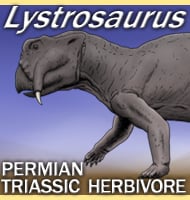Diademodon
In Depth The cynodonts are known to come in a variety of sizes, but at up to two meters in length, Diademodon is easily amongst the largest known cynodonts. Like other cynodonts, Diademodon may have been an omnivore eating both certain parts of plants as well as other animals and carrion. Diademodon lived during the … Read more
